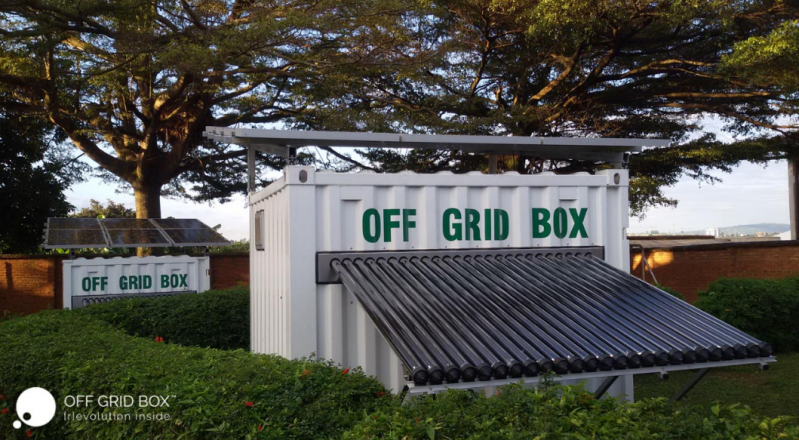Off Grid Box Brings Water and Electricity to Rural Villages
Published on by Water Network Research, Official research team of The Water Network in Technology
Off Grid Box, a startup founded in Italy, is bringing water and electricity to rural villages.
And it all fits inside a 6 x 6 x 6-foot shipping container.

Image source: Off Grid Box
It’s called Off Grid Box. There’s a 3.2kWp solar panel system on the top of the box, with an inverter that converts the captured sunlight into usable energy. The box stores water (which can be collected via rainwater, a well, a nearby stream, ocean or an external tank) and houses a water treatment system powered by solar energy. Excess energy is stored in a battery pack that can be used to power a local commercial grid, homes, businesses or smaller battery packs.
Each box can provide up to 230 families with 27 liters of clean drinking water per day, as well as enough energy to power two lights and two mobile phones. Each box is expected to last at least 15 years.
The idea to combine these solutions into a single box, came from a project that co-founders Emiliano Cecchini and Davide Bonsignore (collaborators on cleantech projects for over a decade) were working on in South Africa. The goal was to equip six OXFAM kindergarten classes with solar power, hot water, rainwater capture, and water purification, but the process of installing various components would take weeks, Cecchini said. By pre-assembling the components in a standalone box, they found that they were able to cut the installation time down to three hours.
The duo launched Off Grid Box with a direct sales model in 2014, selling one-off boxes to NGOs and people living off the grid. They installed 28 boxes across Italy, South Africa, Rwanda, Nigeria, Philippines, Madagascar, the U.S. and Colombia over the next two years.
While the sustainable technology was working, finding a sustainable business model proved a bit more difficult. Selling individual boxes wasn’t particularly profitable or scalable, and the cost — $25,000 to $35,000 — put the box out of reach of many vulnerable communities.
Read full article: Americaninno
Media
Taxonomy
- Water Access
- Technology
- Access
- Water Supply
- Rural Area Water Supply
- Water Management
- Drinking Water